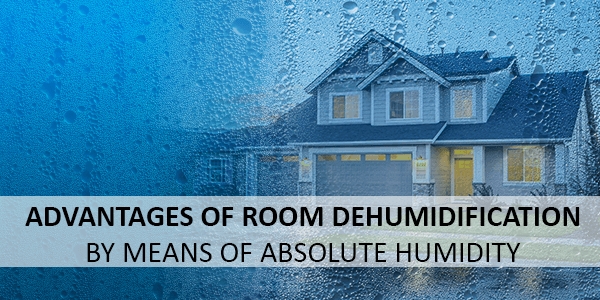
- Written by ZILA GmbH
- font size decrease font size increase font size
Room dehumidification based on the absolute humidity and its advantages
Human senses are only partially suitable for assessing climatic conditions
When it comes to the question of whether how much humidity is too much and if opening the window leads to an improving or deteriorating indoor climate, we have to admit that we humans are not capable of answering this question at all. This measns that we cannot assess the climatic conditions indoors because we can only rely on our senses. However, these only perceive the problem when it is actually much too late. Therefore, dampness can remain unnoticed for a long period of time, which can have far-reaching consequences. The assessment of humidity in the interior depends on many factors, which can only be detected by using suitable sensors.
Relative humidity - What is it?
Relative humidity is a measure of the proportion of water vapour in the air, and, as such, also describes the maximum amount of vapour the room air can absorb. It is given as a percentage and shows the ratio between the current water vapour content and the possible maximum.
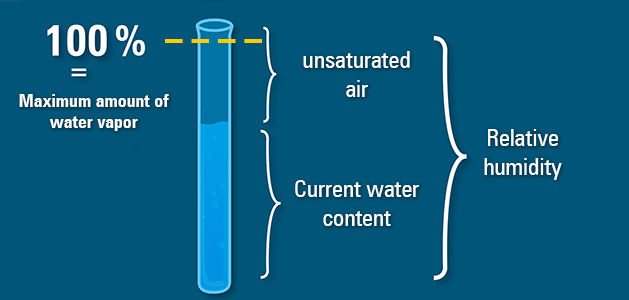
The connection between relative humidity and temperature
When looking at the temperature of the room air, you will notice that warm air can absorb more moisture than cold air. If the temperature of the interior is too low and there is more water vapour in a room than the air can absorb, condensation will form on the walls, ceilings or other items in this room.
As temperatures rise, the saturation limit of the water vapour in the room air also starts to grow exponentially. For any temperature, a specific saturation concentration can be determined, and, over time, the air can absorb considerable amounts of water vapour until this saturation limit is reached. As a result, water drops are released due to this effect.
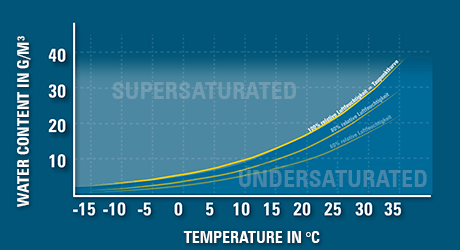
The dew point as an important indicator of a high moisture load
The temperature at which condensation starts to occur on surfaces is known as the dew point. Once warmer room air hits a cold surface, moisture becomes visible as condensation on that surface. The reason for this is the low saturation limit of the air close to the outer wall. Every one of us has already seen the dew point effect in everyday life, so it is very easy to visualise. The best example is when you take a cold bottle out of the fridge in summer and it hits the warm ambient air. The cold bottle suddenly reduces the temperature of the air around it, moisture condenses and becomes visible as small drops on the bottle's surface.
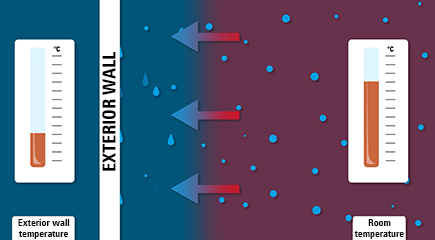
What is the absolute humidity?
Now that we know about relative humidity, temperature and the dew point, we can explain absolute humidity to you and help you understand it better. Absolute humidity is given in grams per cubic metre and is a direct measure of the water vapour content of indoor air. Based on this measurand, you can directly identify how much condensate is to be expected or how much water vapour the air can absorb.
We already know that warm air can absorb more moisture and cold air is saturated within a shorter period of time. But how does this affect the absolute humidity? Since warm room air only reaches saturation with a high humidity load, it is characterised by a high absolute humidity. This phenomenon is particularly perceivable in summer and may not be noticed because, despite high humidity, there is no condensation. Cold air, in contrast, can absorb a significantly lower amount of moisture. For this reason, the absolute humidity can be lower. However, as oversaturation occurs more quickly with cold air, moisture can appear in the form of condensation as a result.
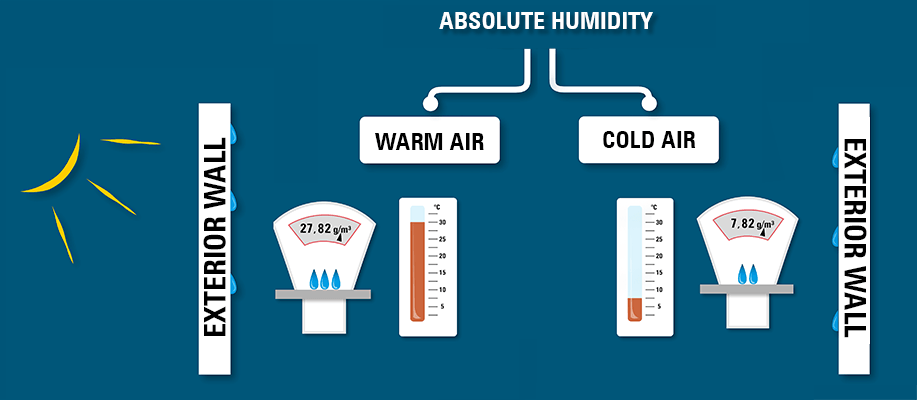
Problems with excessive humidity in the interior
Now that we know about absolute and relative humidity and the dew point, we can conclude that, that the problem of excessive humidity levels in buildings can become a clear health hazard both for people and the building fabric, which is why we would like to answer the question of how we can use this knowledge about absolute humidity effectively and appropriately.
As you have seen, heating rooms without knowing and understanding the climatic conditions is not beneficial whatsoever. It is too expensive and, in some cases, even inadequate, considering how rooms are used. Choosing an energy-efficient approach that also offers benefits for reducing humidity indoors would be much more sustainable. Therefore, exchanging moist indoor air for drier outdoor air can be a worthwhile option, with regard to absolute humidity.
Energy-efficient and cost-saving dehumidification with a climate control
An air exchange is ideally done with an automatic climate control system. The humidity indoors is removed from a room with the help of connected fans, and, at the same time, dry air from outside is brought in.
So, this air exchange lowers the humidity level sustainably and the best thing is that a climate control also contributes to this effect because it measures the absolute humidity indoors and outdoors on a permanent and automatic basis, and, with that, determines suitable ventilation times for the room concerned. Besides, a climate control is also energy-efficient and cost-saving.
All our climate controls are based on the measuring principle of absolute humidity in order to achieve an effective and sustainable room dehumidification, as described above. If you would like to learn more about our aH Controlled technology, please check out this link: aH Controlled technology.
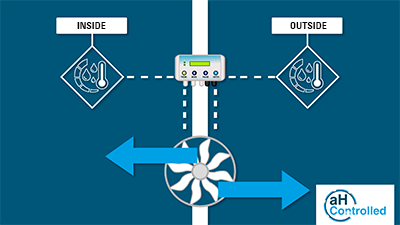
To sum up, we can say that the absolute humidity is the most important factor and physical measurand and provides much clearer and more comparable values.
Therefore, we highly recommend the comparison of absolute humidity since this is an excellent ventilation principle, especially for building ventilation.
Please check out our video about absolute humidity on YouTube and leave us a like if you enjoyed it:
